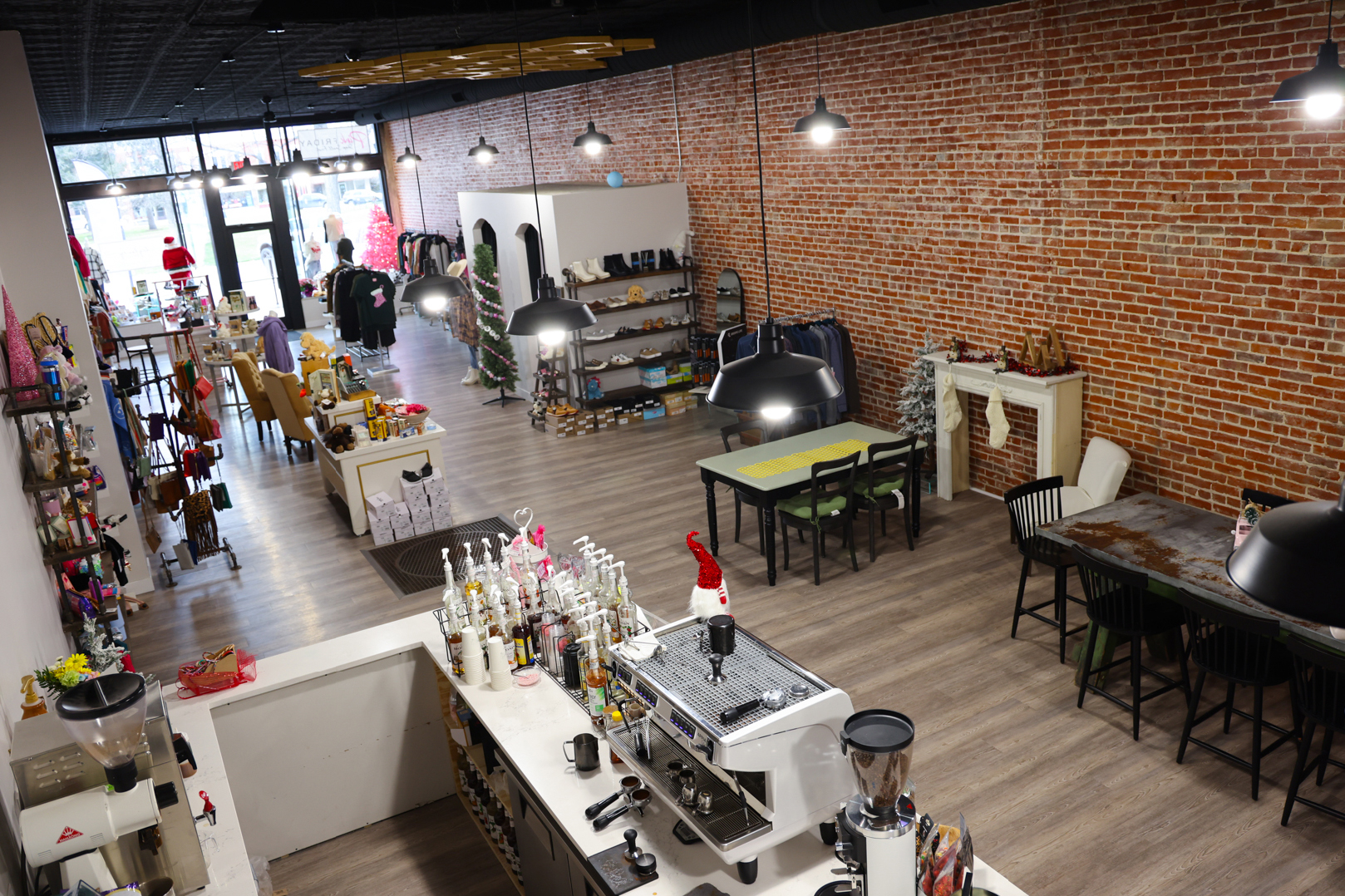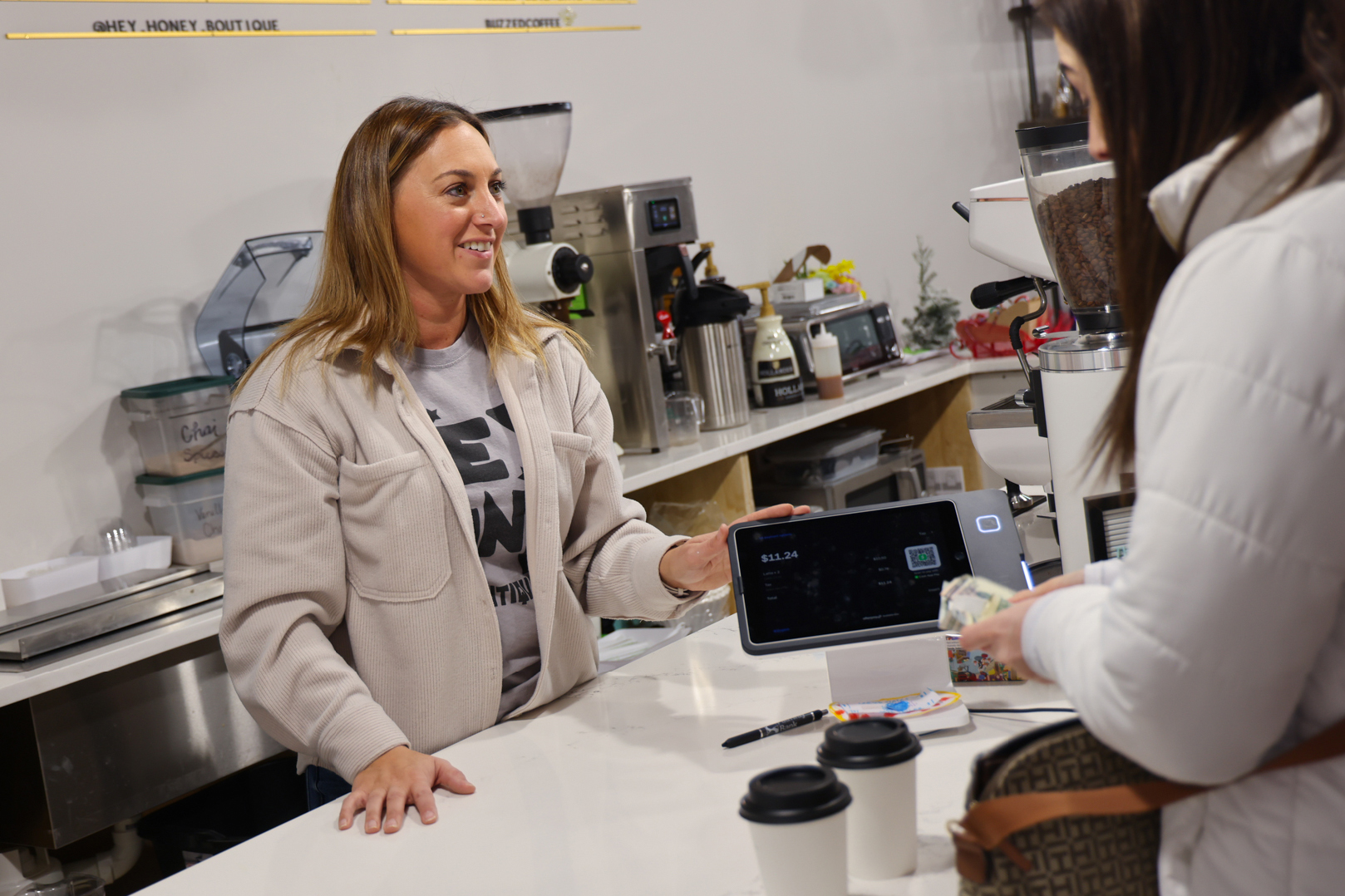
It’s a good problem to have when your business outgrows your retail space. But it’s still a problem. Jessalyn and Dustin Crawford, owners of Hey Honey Boutique in Ord, Nebraska, recently overcame this challenge.
In their previous location, the boutique, which sells women’s clothing, jewelry and accessories, started to feel cramped, so the Crawfords looked for a larger space. Like many rural entrepreneurs, they faced a second problem: build new or renovate — a big expense either way. They turned to Caleb Pollard, a business “eCoach” with Rural Prosperity Nebraska’s eCommunities program, and soon set a benchmark for how collaboration among businesses benefits Nebraska’s communities.
“We talked about a couple different options,” Jessalyn said of working with Pollard. “One of them would have been basically a tear-down lot and then rebuilding, and honestly, that would have cost too much for us, so [buying this building] was more reasonable.” Working with Pollard on different funding options and opportunities, the Crawfords secured the loans they needed to purchase a dilapidated building in downtown Ord.
Pollard walked them through the paperwork for city, county and statewide loans and grants, which included creating and revising business proposal plans and budget proposals for the applications. One funding route was a rural development grant from the U.S. Department of Agriculture, helping make the building itself more energy-efficient. Another was a micro-enterprise tax credit, which, if owners are growing their businesses, qualifies them for up to $20,000 back on business investments.
“By commingling local, state and federal resources, you really create these very affordable platforms and programs to solve what I think are fundamental issues within rural Nebraska communities,” Pollard said.

Such counseling and workshopping with local eCoaches is a mainstay of the eCommunities program. Not only do eCoaches help individuals create businesses, but they work with Nebraska cities to establish and nurture an active entrepreneurial environment, which helps communities identify, collect and cultivate resources that encourage business development. By the end of the third quarter of 2023, the eCommunities program had helped 20 communities in 12 counties, totaling nearly $2.5 million in revenue and savings.
The Crawfords saw firsthand how that one-on-one coaching helped them expand their business into the new building. Constructed in 1840, the building had gone through multiple owners and sat vacant for years when the Crawfords purchased it. “It needed a lot of love,” Jessalyn said.
In addition to their own elbow grease, the Crawfords hired local contractors to restore the building to its original glory. They tore down drywall to showcase the original brickwork and cleared out the drop ceiling to expose original tin ceiling tiles. A local glazier replaced the front and transom windows, which had been boarded up for at least 70 years. Area contractors installed new insulation and plumbing and even raised the sinking floor by 4.5 inches.
“All local people,” Jessalyn said of the collaborative work.
The boutique is now a thriving hub in Ord’s downtown. The front of the building, managed by Jessalyn, is the boutique with an expanded array of merchandise, and the back has been expanded by Dustin into a gun shop. The two meet in the middle at a coffee bar.
“It’s kind of like a one-stop shop,” Jessalyn said. “We have women coming in here, and they’re like, ‘I can bring my husband,’ or vice versa. Men are so excited — ‘My wife can shop while I shop’ — and then they can get coffee while they shop around.”

The couple is still deciding on what to do with the second floor. When they do, they’ll be able to use the restored and functional open-air freight elevator from 1840 that they decided to keep.
“We’re not just talking about one or two businesses,” Pollard said. “We’re talking about entire relationships between businesses that are bringing commingled foot traffic, as well as online traffic, to the community. Ultimately, economic development isn’t about just jobs. The more important element is the betterment of the human condition, and the best way to do that is to invest in your neighbors and your community members.”
Jessalyn said: “There’s excitement from the community. I have the older generation coming in and remembering what [the building] looked like. I feel like we kind of saved a little piece of history of Ord.”
Saving that history is not only about preserving a community’s past; it’s also about propelling the community into the future. Pollard said the renovation project is an example of what could become Nebraska’s rural renaissance.
“I think there’s something uniquely special about doing business out here,” said Pollard, referring to rural Nebraska. “There’s something in the water. There’s community support. And it really makes a difference. When you talk about opportunities in rural communities, one of the things you’ll find out here that you just don’t find elsewhere is the level of commitment to supporting our own home-grown entrepreneurs.”
Share
News Release Contact(s)
Related Links
Tags
High Resolution Photos

HIGH RESOLUTION PHOTOS

HIGH RESOLUTION PHOTOS








